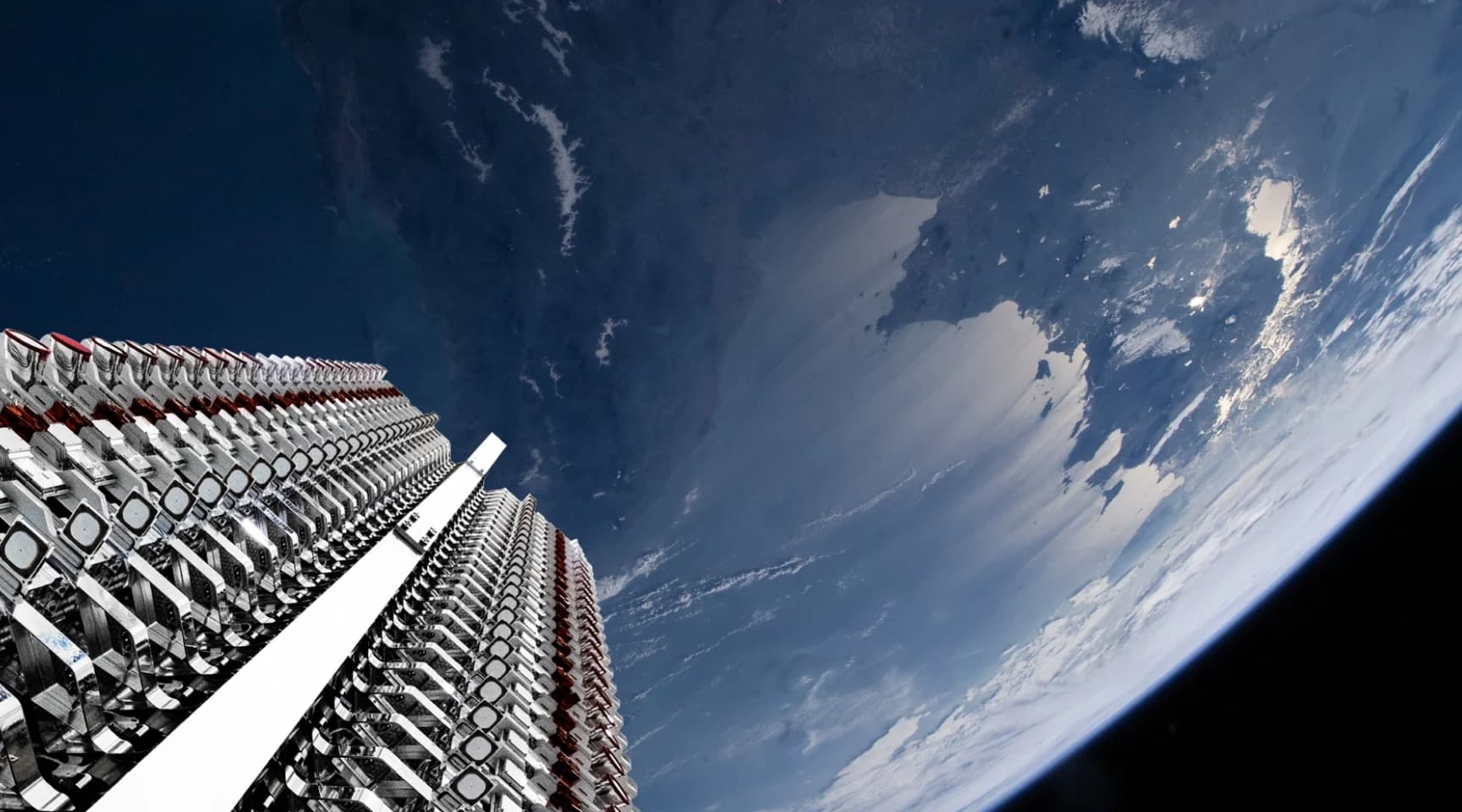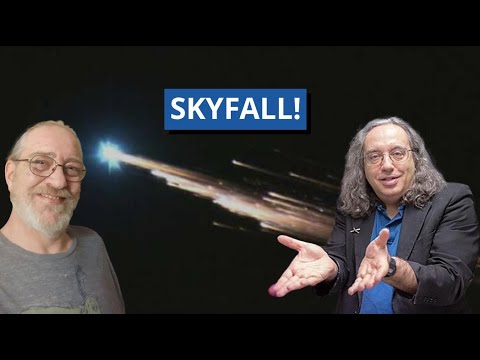The videos of “fire trails” crossing the sky are multiplying on social media. Many show satellites re-entering and disintegrating in the atmosphere, often identified as Starlink units. The scene is impressive and has sparked a debate: Is the risk to the population increasing? What about space debris, the Kessler syndrome, and the expansion of mega-constellations? The scientists’ brief answer is cautious: the individual risk remains low today, but pressure on low Earth orbit (LEO) is growing and international coordination is urgently needed.
An increasingly crowded sky
Low Earth orbit — up to about 2,000 kilometers — has become the Main highway of the new space economy. By 2025, thousands of operational satellites will orbit the Earth, with Starlink as the dominant player and other constellations (Kuiper, Chinese networks in deployment, and other private initiatives) gaining momentum. Besides active assets, there are inactive objects and fragments that are not systematically tracked if they are too small. The result is a congested environment, where managing space traffic and establishing end-of-life protocols (controlled deorbiting and safe disintegration) have transitioned from nice-to-have to essential.
In this context, re-entries have become routine: averaging about two per day in 2025, with the potential to reach multiple daily as more short-cycle satellites are decommissioned or mature. While this frequency alone does not imply catastrophe, it increases the statistical likelihood of point incidents and debris reaching the ground. Overall, it calls for more data, clear rules, and verifiable compliance.
Why satellites “fall” (and why generally nothing happens)
Most commercial LEO satellites are designed with a useful life of 5–7 years. At the end of that period, if the spacecraft is operational, it lowers its orbit for atmospheric resistance to do the rest. Reentry is not instantaneous nor 100% predictable: the exact point depends on solar activity, atmospheric density, and satellite orientation. The industry’s best-practice involves designs “demisable”: structuring materials and components so that they burn up completely during descent, minimizing the risk of remaining debris reaching land.
Starlink has adopted this philosophy. Its satellites are intended to disintegrate upon re-entry, so the residual risk is associated with small pieces that might survive. Does that eliminate the risk? Not entirely. It’s low, but not null. The key factor is not the brand, but the total volume of objects that, by design or failure, will ultimately re-enter.
Meteors vs satellites: how to distinguish them in the sky
Meteors (shooting stars) streak across the sky at high speed and sharp trajectories, with short, bright trails. In contrast, re-entering satellites tend to move more “stately”, with visible fragmentation and a longer-lasting trace. The brightness can fluctuate as parts break apart or ignite from heating. The typical breakup altitude is around 60–70 kilometers, although the maximum heating occurs slightly higher. At that altitude, there are no aircraft, and the likelihood of impact on people remains extremely low; yet, public concern grows when videos go viral.
The elephant in the room: Kessler syndrome
In the 1970s, Don Kessler proposed a scenario where, beyond a certain density of objects in orbit, a collision creates fragments that cause more collisions in a cascade. Today, most experts believe LEO is far from that catastrophic threshold, but warn: with mega-constellations of tens of thousands of satellites and millions of centimeter-sized fragments that are not tracked, an trigger event (e.g., a radiation storm disabling systems or a multiple collision in a densely populated layer) could rapidly complicate everything. The cure: collision avoidance today, decommissioning assets at end-of-life, and limiting fragment creation through standards and independent verification.
Different designs and behaviors in re-entries
The industry is not homogeneous. Some operators have been publicly sharing mitigation plans for years, testing demisability, and coordinating maneuvers via tracking networks. Others accumulate incidents involving stage remnants or large fragments that have re-entered uncontrolled over populated or maritime areas. In this contrast, LEO communication satellites are often on the safer side: massive but demisable, with altitudes favoring atmospheric braking over months or a few years. On the more controversial side are large orbital debris or high-orbit objects that lack planned deorbiting and return decades later, often without transparency about their final trajectory.
So what is the actual risk today?
- Individual risk (to a person or a home): very low. The chances of debris impacting someone remain practically zero.
- Aggregate risk (to society): increasing over time, due to volume and frequency of re-entries. The more objects that re-enter, the higher the chances of incident occurrence (material damage, debris finds, temporary airspace closures).
- Systemic risk (for LEO’s sustainability): conditional. With proper space traffic management, responsible deorbiting, and common standards, the system can be manageable. Without rules, the margin for error narrows.
What do astrophysicists and traffic managers advocate?
- Global rules with teeth: standards for demisability, maximum probability of surviving debris, and end-of-life deadlines.
- Registration and transparency: public lists of objects, deorbit plans, and updated reentry windows.
- Space traffic management services: interoperable coordination to prevent collisions and share ephemeris data accurately.
- Active debris removal technologies: demonstration-scale debris removal with clear governance (who pays, who approves, what is removed).
- Enhanced tracking capacity for small fragments (centimeter-scale), currently untracked, which increase uncertainty.
And what about expansion plans? Thousands, tens of thousands… or hundreds of thousands?
Besides Starlink, Kuiper (Amazon) is accelerating deployment. Simultaneously, Chinese initiatives —some with more than a hundred satellites already in orbit, and ambitions of tens of thousands— progress within their own ecosystem. Amid the noise, intent files from emerging companies with huge figures have circulated. Beyond marketing, it’s sensible to separate projects with spectrum, funding, and launchers from those in public declaration phase. In any case, the growth trend is clear: more satellites in less time.
What does the data say (and how to interpret viral videos)
- Reentries occur daily and will increase as constellations grow and mature.
- Most recent LEO satellites are designed to burn up completely; debris risk exists but is low.
- Distinguishing meteors from re-entries helps interpret videos: slower, fragmented trajectories indicate satellites; fast, very bright flashes suggest meteors.
- An eye-catching incident in a video does not, by itself, indicate a systemic risk change. What matters is statistics and adherence to best practices by all operators.
What could change in the short term?
- More media coverage and public pressure to establish minimum safety thresholds.
- Multilateral commitments (voluntary first, regulatory later) on end-of-life, deorbit timelines, and ephemeris sharing.
- Growth in tracking, analysis, and traffic management services, including insurance covering re-entry incidents.
- Better communication with the public: explaining what is seen in the sky, what it means for safety, and what operators are doing to minimize risks.
Frequently Asked Questions (FAQ)
Can debris from a satellite cause damage upon reentry?
Yes, but the probability is very low. Modern LEO satellites are designed to disintegrate almost completely. Small fragments may survive, with low but non-zero risk. The key is to maintain demisable designs and orderly deorbiting at end-of-life.
Why are we seeing more “fireballs” in the sky now?
Because there are more objects in LEO and, therefore, more reentries. Also, mobile networks and social sharing mean that any event is quickly shared. Many spectacular trails are controlled reentries or meteors; distinguishing them prevents unnecessary alarm.
Are we close to the Kessler syndrome?
Not imminently, but the systemic risk increases with the volume of satellites and fragments. To prevent a cascade, standards, coordination, and active deorbiting of old or inactive objects are necessary.
Who should regulate and how?
The UN (through COPUOS) and national agencies can adopt common standards: maximum deorbit times, survivable debris probability, shared tracking, and transparency. Independent verification and sanctions for non-compliance are essential for effective rules.
Sources: pinishv, tomshardware, earthsky.org, planet4589.org, and Interesting Engineering


